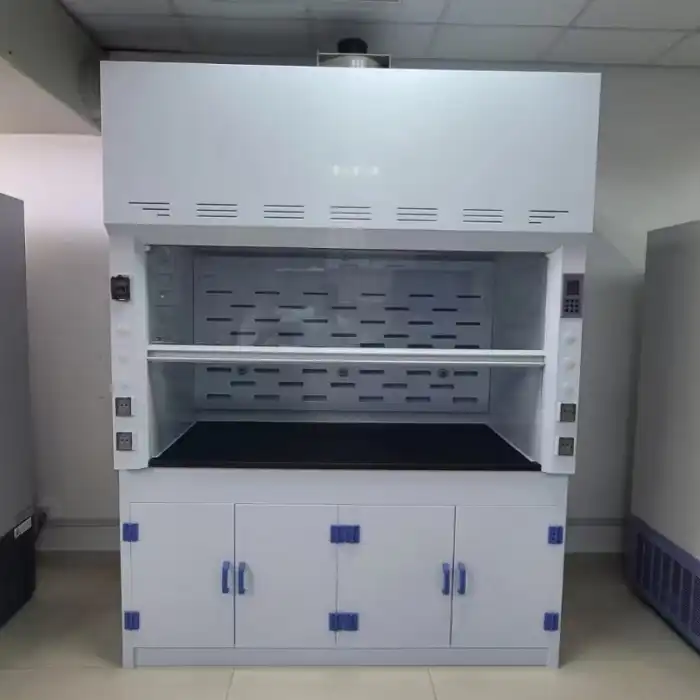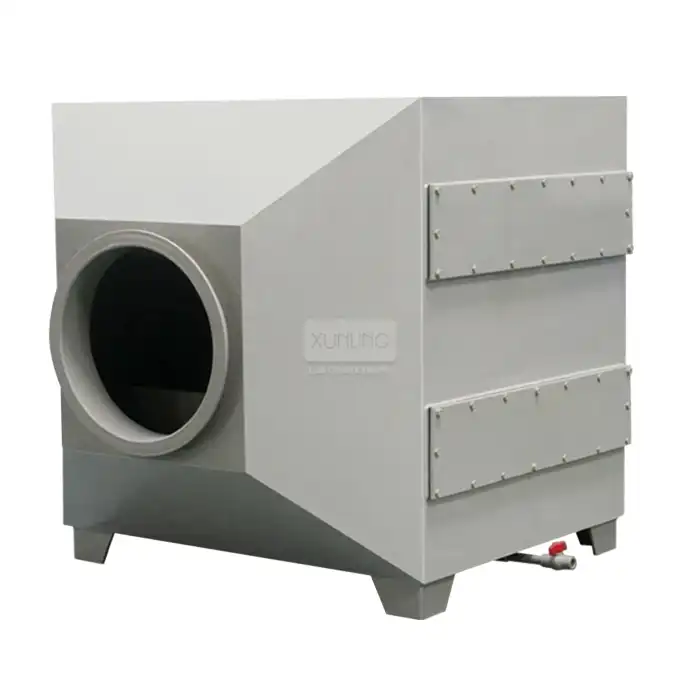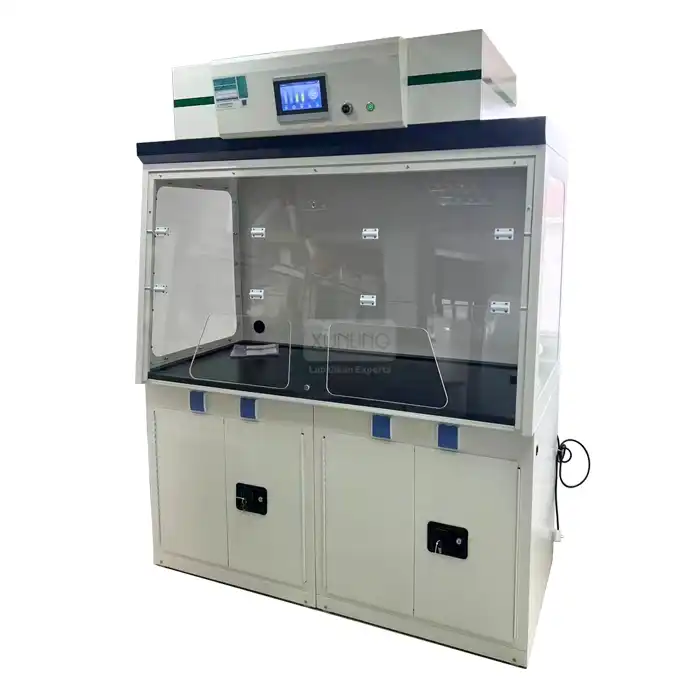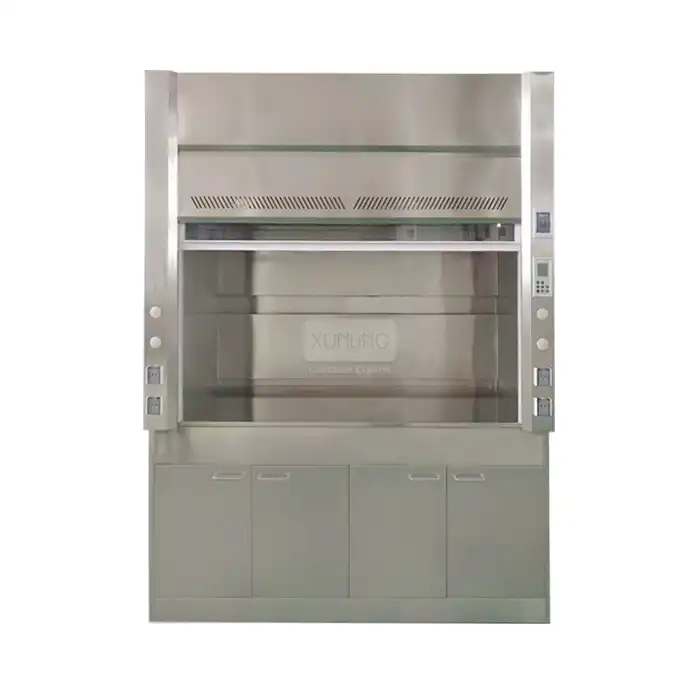
What to Look for in a Galvanized Steel Basic Fume Hood?
2025-10-13 09:00:02
When selecting laboratory safety equipment, choosing the right Galvanized Steel Basic Fume Hood is crucial for maintaining a secure and compliant working environment. Laboratory professionals, equipment distributors, and facility managers must understand the essential features that distinguish superior fume hoods from basic models. A quality Galvanized Steel Basic Fume Hood combines robust construction, efficient ventilation capabilities, and advanced safety features to protect laboratory personnel from hazardous chemicals, vapors, and fumes while maintaining optimal workflow efficiency.
Essential Construction Features to Evaluate
Material Quality and Durability Standards
The foundation of any reliable Galvanized Steel Basic Fume Hood begins with superior material construction. High-quality cold-rolled steel plates form the structural backbone, providing exceptional strength and longevity that laboratory environments demand. The galvanization process creates a protective zinc coating that significantly enhances corrosion resistance, making these units ideal for laboratories handling acidic compounds, alkaline solutions, and other aggressive chemicals. The steel undergoes rigorous pickling and phosphating treatments before receiving an electrostatic spray coating of epoxy resin powder, creating multiple layers of protection against environmental degradation. This comprehensive surface treatment ensures the fume hood maintains its structural integrity and aesthetic appearance even after years of continuous use in demanding laboratory conditions. The robust construction methodology employed in manufacturing these units enables them to withstand the weight of various laboratory equipment, instruments, and supplies without compromising performance or safety standards.
Advanced Surface Treatment Technologies
Modern Galvanized Steel Basic Fume Hood manufacturing incorporates sophisticated surface treatment processes that extend far beyond basic galvanization. The multi-stage treatment begins with thorough cleaning and preparation of the steel substrate, followed by controlled pickling processes that remove mill scale and surface contaminants. Phosphating treatment creates a crystalline conversion coating that enhances paint adhesion while providing additional corrosion protection. The electrostatic spraying of epoxy resin powder creates a uniform, durable finish that resists chemical attack, moisture penetration, and mechanical damage. This advanced coating system provides waterproof characteristics essential for laboratory washing and decontamination procedures. The chemical resistance properties extend to acids, alkalis, solvents, and other laboratory chemicals commonly encountered in research and analytical work. Temperature stability of the coating system ensures consistent performance across varying environmental conditions typical of laboratory settings.
Structural Engineering and Load Capacity
Professional-grade Galvanized Steel Basic Fume Hood designs incorporate engineering principles that ensure stable operation under diverse loading conditions. The cabinet structure utilizes strategically placed reinforcement elements that distribute weight evenly across the frame, preventing deflection or warping during operation. Load-bearing components are designed to accommodate not only the hood's operational equipment but also additional laboratory apparatus that users may place within the workspace. The structural design accounts for dynamic loads created by airflow patterns, door movements, and equipment vibrations. Engineering specifications typically include safety factors that exceed normal operational requirements, providing confidence in long-term performance reliability. The modular construction approach allows for customization while maintaining structural integrity, enabling laboratories to specify dimensions that match their specific workspace requirements without compromising safety or performance standards.
Critical Safety and Performance Parameters
Airflow Control and Ventilation Efficiency
Effective airflow management represents the most critical aspect of Galvanized Steel Basic Fume Hood performance, directly impacting user safety and operational effectiveness. Professional-grade units maintain face velocities between 75-125 feet per minute (fpm), with 100 fpm considered the standard for most applications. A fume hood face velocity of 100 fpm is considered acceptable in standard practice, though specific applications may require adjusted velocities to achieve optimal containment. The ventilation system design incorporates carefully engineered airflow patterns that create negative pressure within the cabinet, ensuring hazardous substances are drawn away from the user's breathing zone. Baffle systems within the hood direct airflow efficiently while minimizing turbulence that could compromise containment effectiveness. Variable air volume (VAV) controls allow operators to adjust airflow rates based on specific applications, optimizing energy efficiency while maintaining safety standards. Modern units incorporate monitoring systems that continuously track face velocity and alert users to performance deviations that could compromise safety.
Fire Protection and Emergency Response Features
Superior fire protection capabilities distinguish professional Galvanized Steel Basic Fume Hood models from basic alternatives, incorporating multiple safety systems designed to prevent and contain fire incidents. The galvanized steel construction inherently provides excellent fire resistance properties, maintaining structural integrity at elevated temperatures while containing flames within the cabinet area. Emergency shut-off systems enable rapid response to hazardous situations, automatically closing dampers and activating alarm systems when dangerous conditions are detected. Fire suppression integration capabilities allow connection to facility-wide emergency response systems, coordinating fume hood safety measures with broader laboratory emergency protocols. Heat-resistant materials used in critical components ensure continued operation during emergency situations, providing time for safe evacuation and professional response. The design incorporates multiple escape routes for hazardous vapors, preventing accumulation that could contribute to fire or explosion risks.
Noise Control and Workplace Comfort
Professional laboratory environments require equipment that operates efficiently without creating excessive noise that interferes with concentration or communication. Quality Galvanized Steel Basic Fume Hood units maintain noise levels below 65 decibels during normal operation, ensuring comfortable working conditions for extended periods. Sound dampening technologies incorporated into the design include vibration isolation mounts, acoustic insulation materials, and aerodynamic fan blade designs that minimize turbulence-related noise. The quiet operation characteristics enable laboratories to maintain multiple fume hoods in close proximity without creating cumulative noise issues that affect productivity or worker comfort. Variable speed controls allow operators to adjust fan speeds based on containment requirements, further optimizing noise levels for specific applications. Professional installations include proper ductwork design that minimizes resonance and airflow noise transmission throughout the laboratory facility.
Advanced Features and Customization Options
Control Systems and User Interface Design
Modern Galvanized Steel Basic Fume Hood units incorporate sophisticated control systems that enhance both safety and operational convenience. Digital LCD control panels provide real-time monitoring of critical parameters including airflow rates, face velocity, and system status indicators. Programmable controls allow users to establish custom operating profiles for different applications, automatically adjusting ventilation rates and other parameters based on predetermined settings. Safety interlocks prevent unsafe operations by monitoring sash position, airflow conditions, and emergency system status before allowing normal operation. Remote monitoring capabilities enable facility managers to track fume hood performance across multiple laboratory locations, identifying maintenance needs and ensuring compliance with safety protocols. Energy management features optimize power consumption while maintaining required safety performance, contributing to sustainable laboratory operations.
Lighting and Visibility Enhancement Systems
Adequate illumination within the fume hood workspace is essential for safe and accurate laboratory work, requiring carefully designed lighting systems that operate effectively in chemically aggressive environments. LED lighting technology provides consistent, energy-efficient illumination while minimizing heat generation that could affect temperature-sensitive applications. Explosion-proof lighting fixtures meet safety requirements for laboratories handling flammable materials, ensuring continued operation without creating ignition sources. Multi-zone lighting controls enable operators to adjust illumination levels based on specific task requirements, from general workspace lighting to high-intensity applications requiring detailed visibility. Emergency lighting systems maintain minimum illumination levels during power outages or emergency situations, enabling safe shutdown procedures and evacuation if necessary. Anti-glare designs minimize eye strain during extended work periods while providing uniform light distribution across the entire work surface.
Workspace Configuration and Storage Solutions
Flexible workspace design enables laboratories to optimize their Galvanized Steel Basic Fume Hood configuration for specific applications and workflow requirements. Adjustable shelving systems accommodate equipment of various sizes while maintaining proper airflow patterns essential for safety. Integrated storage solutions provide convenient access to frequently used supplies while keeping them within the protected environment of the fume hood. Removable work surfaces facilitate cleaning and decontamination procedures, essential for laboratories handling hazardous materials or conducting sterile operations. Utility connections including electrical outlets, gas valves, and water supplies are strategically positioned to support common laboratory equipment while maintaining safety clearances and accessibility. Modular designs allow future modifications and upgrades without requiring complete unit replacement, providing long-term flexibility for evolving laboratory needs.
Conclusion
Selecting the appropriate Galvanized Steel Basic Fume Hood requires careful evaluation of construction quality, safety features, and performance capabilities that align with specific laboratory requirements. The combination of durable galvanized steel construction, advanced surface treatments, and sophisticated control systems creates equipment that provides reliable protection while supporting efficient laboratory operations. Professional installations incorporating proper airflow management, fire protection systems, and user-friendly interfaces contribute to safe, productive laboratory environments that meet regulatory standards and operational objectives.
As a China Galvanized Steel Basic Fume Hood factory, Xi'an Xunling Electronic Technology Co., Ltd. stands as a premier China Galvanized Steel Basic Fume Hood supplier and China Galvanized Steel Basic Fume Hood manufacturer, offering comprehensive solutions for laboratory safety equipment needs. Our expertise as a China Galvanized Steel Basic Fume Hood wholesale provider ensures cost-effective access to High Quality Galvanized Steel Basic Fume Hood units designed for demanding applications. With competitive Galvanized Steel Basic Fume Hood price options and Galvanized Steel Basic Fume Hood for sale through various channels, we provide 5-day delivery, 5-year warranty coverage, and complete customization services. Our one-stop laboratory equipment solutions include OEM support, fast delivery, and comprehensive after-sales service. For detailed information about our products and services, Contact Us at xalabfurniture@163.com to discuss your specific requirements and receive professional guidance for your laboratory safety equipment needs.
References
1. "Laboratory Fume Hood Performance Standards" - American Society of Heating, Refrigerating and Air-Conditioning Engineers (ASHRAE), Technical Committee 9.10
2. "Scientific Equipment and Furniture Association Guidelines for Laboratory Fume Hoods" - Scientific Equipment and Furniture Association (SEFA-1-2010)
3. "Chemical Fume Hood Safety Requirements and Testing Procedures" - Occupational Safety and Health Administration, Laboratory Safety Guidelines
4. "International Standards for Laboratory Ventilation Equipment" - International Organization for Standardization, ISO 14175-1:2003
YOU MAY LIKE
















